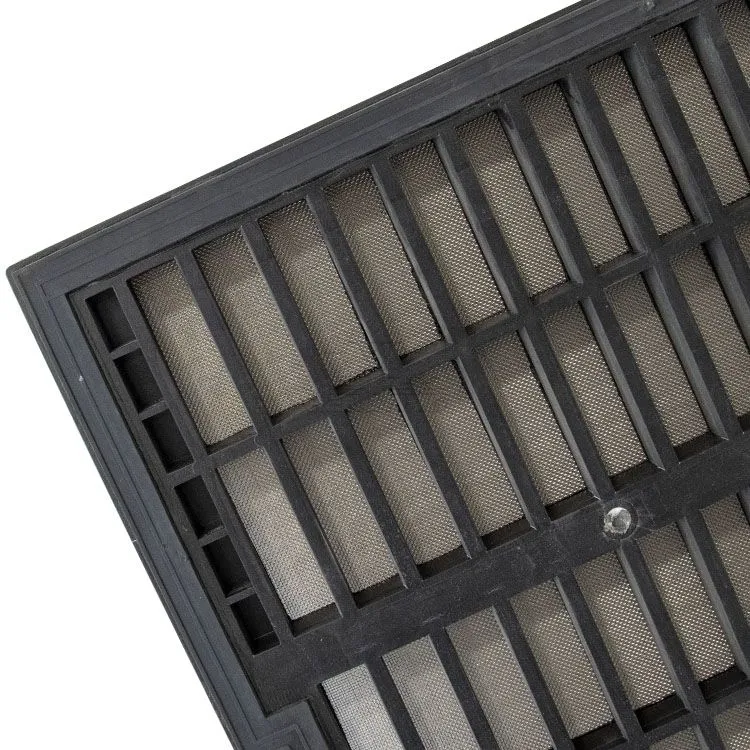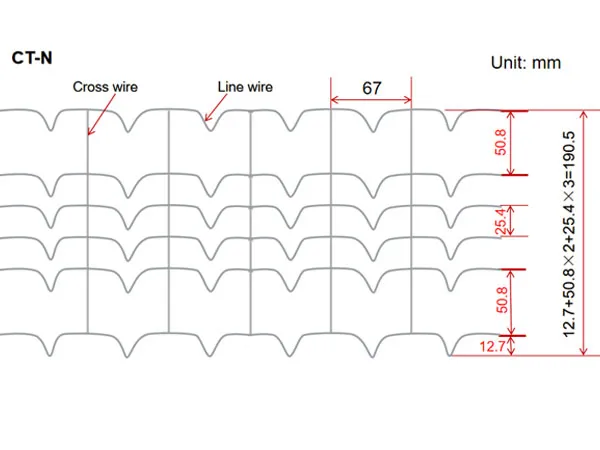- Industrial zone, South of Anping Town, Hengshui, Hebei, China.
- sales@hfpetromesh.com
- +86-18931809706
 Afrikaans
Afrikaans  Albanian
Albanian  Amharic
Amharic  Arabic
Arabic  Armenian
Armenian  Azerbaijani
Azerbaijani  Basque
Basque  Belarusian
Belarusian  Bengali
Bengali  Bosnian
Bosnian  Bulgarian
Bulgarian  Catalan
Catalan  Cebuano
Cebuano  Corsican
Corsican  Croatian
Croatian  Czech
Czech  Danish
Danish  Dutch
Dutch  English
English  Esperanto
Esperanto  Estonian
Estonian  Finnish
Finnish  French
French  Frisian
Frisian  Galician
Galician  Georgian
Georgian  German
German  Greek
Greek  Gujarati
Gujarati  Haitian Creole
Haitian Creole  hausa
hausa  hawaiian
hawaiian  Hebrew
Hebrew  Hindi
Hindi  Miao
Miao  Hungarian
Hungarian  Icelandic
Icelandic  igbo
igbo  Indonesian
Indonesian  irish
irish  Italian
Italian  Japanese
Japanese  Javanese
Javanese  Kannada
Kannada  kazakh
kazakh  Khmer
Khmer  Rwandese
Rwandese  Korean
Korean  Kurdish
Kurdish  Kyrgyz
Kyrgyz  Lao
Lao  Latin
Latin  Latvian
Latvian  Lithuanian
Lithuanian  Luxembourgish
Luxembourgish  Macedonian
Macedonian  Malgashi
Malgashi  Malay
Malay  Malayalam
Malayalam  Maltese
Maltese  Maori
Maori  Marathi
Marathi  Mongolian
Mongolian  Myanmar
Myanmar  Nepali
Nepali  Norwegian
Norwegian  Norwegian
Norwegian  Occitan
Occitan  Pashto
Pashto  Persian
Persian  Polish
Polish  Portuguese
Portuguese  Punjabi
Punjabi  Romanian
Romanian  Russian
Russian  Samoan
Samoan  Scottish Gaelic
Scottish Gaelic  Serbian
Serbian  Sesotho
Sesotho  Shona
Shona  Sindhi
Sindhi  Sinhala
Sinhala  Slovak
Slovak  Slovenian
Slovenian  Somali
Somali  Spanish
Spanish  Sundanese
Sundanese  Swahili
Swahili  Swedish
Swedish  Tagalog
Tagalog  Tajik
Tajik  Tamil
Tamil  Tatar
Tatar  Telugu
Telugu  Thai
Thai  Turkish
Turkish  Turkmen
Turkmen  Ukrainian
Ukrainian  Urdu
Urdu  Uighur
Uighur  Uzbek
Uzbek  Vietnamese
Vietnamese  Welsh
Welsh  Bantu
Bantu  Yiddish
Yiddish  Yoruba
Yoruba  Zulu
Zulu
- Afrikaans
- Albanian
- Amharic
- Arabic
- Armenian
- Azerbaijani
- Basque
- Belarusian
- Bengali
- Bosnian
- Bulgarian
- Catalan
- Cebuano
- Corsican
- Croatian
- Czech
- Danish
- Dutch
- English
- Esperanto
- Estonian
- Finnish
- French
- Frisian
- Galician
- Georgian
- German
- Greek
- Gujarati
- Haitian Creole
- hausa
- hawaiian
- Hebrew
- Hindi
- Miao
- Hungarian
- Icelandic
- igbo
- Indonesian
- irish
- Italian
- Japanese
- Javanese
- Kannada
- kazakh
- Khmer
- Rwandese
- Korean
- Kurdish
- Kyrgyz
- Lao
- Latin
- Latvian
- Lithuanian
- Luxembourgish
- Macedonian
- Malgashi
- Malay
- Malayalam
- Maltese
- Maori
- Marathi
- Mongolian
- Myanmar
- Nepali
- Norwegian
- Norwegian
- Occitan
- Pashto
- Persian
- Polish
- Portuguese
- Punjabi
- Romanian
- Russian
- Samoan
- Scottish Gaelic
- Serbian
- Sesotho
- Shona
- Sindhi
- Sinhala
- Slovak
- Slovenian
- Somali
- Spanish
- Sundanese
- Swahili
- Swedish
- Tagalog
- Tajik
- Tamil
- Tatar
- Telugu
- Thai
- Turkish
- Turkmen
- Ukrainian
- Urdu
- Uighur
- Uzbek
- Vietnamese
- Welsh
- Bantu
- Yiddish
- Yoruba
- Zulu
febr. . 12, 2025 15:56
Back to list
Steel Grating
Understanding the Cost Dynamics of Galvanized Grating
4. Supplier and Economic Factors Supplier pricing strategies greatly impact galvanized grating costs. Established suppliers with a reputation for quality can charge premium prices. Similarly, fluctuations in material costs, driven by global steel prices or economic conditions, could lead to price variations. It's vital to monitor these market changes and potentially lock in prices through strategic purchasing agreements. 5. Transportation and Logistics Logistics is a crucial, often overlooked factor. The location of the supplier relative to the site can affect transportation costs. Bulk orders may reduce per-unit shipping fees, but logistics planning is essential to ensure that transportation costs do not unexpectedly inflate the overall project budget. Cost-Saving Tips To optimize costs without compromising quality, consider these strategies - Compare multiple suppliers to identify competitive pricing, ensuring they maintain quality standards. - Opt for standard sizes whenever possible to avoid custom manufacturing costs. - Engage in long-term partnerships with suppliers to benefit from negotiated pricing. - Evaluate the total cost of ownership, factoring in maintenance and lifespan, rather than focusing solely on initial purchase price. Trust and Authority in Supplier Selection Selecting a reputable supplier is crucial. Lean towards those who demonstrate a robust track record in providing high-quality galvanized grating and exhibit transparency in their pricing. Customer reviews, industry certifications, and the ability to meet project timelines are indicators of a supplier’s reliability. Furthermore, engage with experts to assess supplier offerings, ensuring that they align with project-specific requirements. In Summary Understanding the myriad factors affecting the cost of galvanized grating allows for informed decision-making that balances financial constraints with quality demands. By assessing material types, finishes, and supplier reliability, project managers can ensure that they choose the best products for both immediate and long-term needs. Ultimately, awareness and strategic planning are key to leveraging galvanized grating’s benefits while maintaining budgetary control.


4. Supplier and Economic Factors Supplier pricing strategies greatly impact galvanized grating costs. Established suppliers with a reputation for quality can charge premium prices. Similarly, fluctuations in material costs, driven by global steel prices or economic conditions, could lead to price variations. It's vital to monitor these market changes and potentially lock in prices through strategic purchasing agreements. 5. Transportation and Logistics Logistics is a crucial, often overlooked factor. The location of the supplier relative to the site can affect transportation costs. Bulk orders may reduce per-unit shipping fees, but logistics planning is essential to ensure that transportation costs do not unexpectedly inflate the overall project budget. Cost-Saving Tips To optimize costs without compromising quality, consider these strategies - Compare multiple suppliers to identify competitive pricing, ensuring they maintain quality standards. - Opt for standard sizes whenever possible to avoid custom manufacturing costs. - Engage in long-term partnerships with suppliers to benefit from negotiated pricing. - Evaluate the total cost of ownership, factoring in maintenance and lifespan, rather than focusing solely on initial purchase price. Trust and Authority in Supplier Selection Selecting a reputable supplier is crucial. Lean towards those who demonstrate a robust track record in providing high-quality galvanized grating and exhibit transparency in their pricing. Customer reviews, industry certifications, and the ability to meet project timelines are indicators of a supplier’s reliability. Furthermore, engage with experts to assess supplier offerings, ensuring that they align with project-specific requirements. In Summary Understanding the myriad factors affecting the cost of galvanized grating allows for informed decision-making that balances financial constraints with quality demands. By assessing material types, finishes, and supplier reliability, project managers can ensure that they choose the best products for both immediate and long-term needs. Ultimately, awareness and strategic planning are key to leveraging galvanized grating’s benefits while maintaining budgetary control.
Share
Latest news
-
Welded Steel Bar Grating: The Rugged Industrial Flooring Solution Built for Load and LongevityNewsJun.24,2025
-
Steel Walkway Grating: Reliable, Resilient, and Built for Every StepNewsJun.24,2025
-
Shale Shaker Screen for Sale: Optimize Drilling Efficiency with Precision Screening PowerNewsJun.24,2025
-
Shaker Screen for Sale: Elevate Your Drilling Efficiency with Durable Separation SolutionsNewsJun.24,2025
-
Press Locked Steel Grating: Industrial Strength with Precision Fit for Heavy-Duty ApplicationsNewsJun.24,2025
-
Perimeter Safety Netting: The Critical Safety Upgrade for Every HelipadNewsJun.24,2025